Finishing putty "Prospectors": advantages and disadvantages
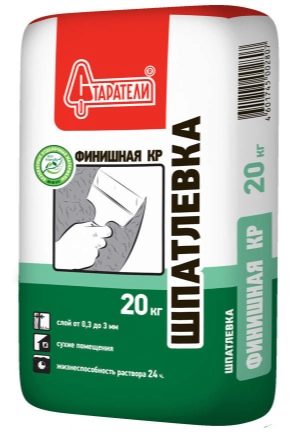
With the help of the putty, the surfaces of walls or ceilings acquire the evenness necessary for subsequent finishing. A good option is a mixture from the Prospector company. It is not expensive, but at the same time it is able to create a high-quality top layer on the plastered surface, which can act as a base for subsequent finishing work (wallpapering or painting) and the final decorative coating.
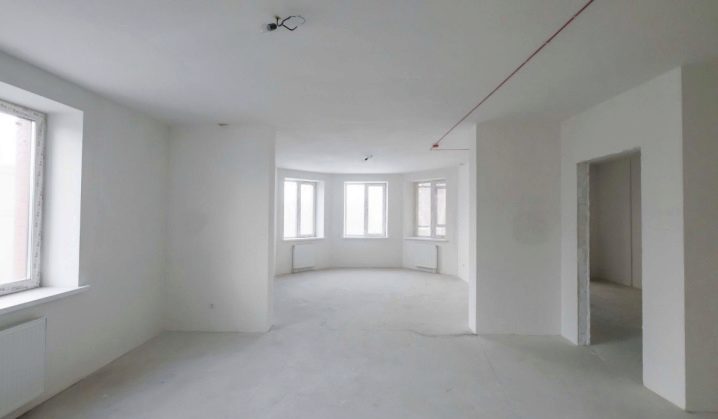
Peculiarities
The main distinguishing feature of the Finishing Putty "Prospectors" is a high degree of adhesion to the substrate, which contributes to a long service life and prevents cracking or delamination of the coating.
Another feature that the company relies on as a competitive advantage is the high quality of the mixture. This organization pays close attention to production with the use of modern technologies and almost completely automated processes for quality control of dry mixtures. Moreover, this control is carried out continuously at all production sites, starting from the receipt of raw materials and ending with the dispatch of the finished product to the warehouse.
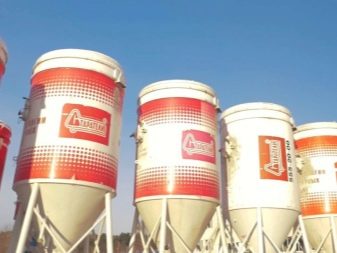
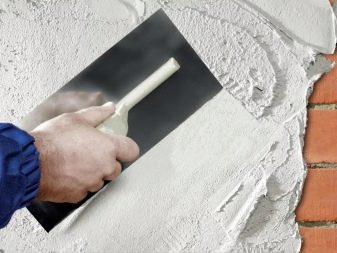
For more than 20 years, the company has been constantly improving the formulations of the produced repair compounds in order to improve their operational and technical parameters. In the production of dry mixes, only selected raw materials from trusted and well-proven suppliers are used.
The production facilities of the company are constantly being modernized, which contributes to an even greater increase in the accuracy of dosages and, accordingly, to an increase in the quality of the finished product.
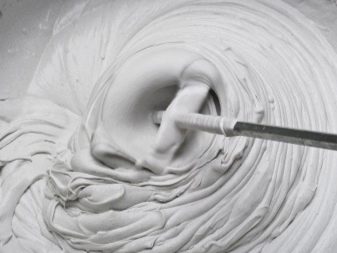
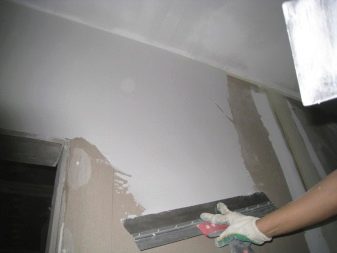
Other properties inherent in the finishing putty “Prospectors:
- Ease of preparation. It is enough just to dilute the dry mixture with water in proportions according to the instructions. At the same time, it can be mixed manually without the use of special devices.
- The ability to prepare a putty mixture of various viscosities by increasing or decreasing the volume of added water.
- Ensuring the creation of an even finish layer. The putty lies flat on the base, does not run off, does not form lumps, cavities and cracks. It masks well all the flaws of the previous layer.
- High degree of elasticity, which ensures ease of application of the composition. The putty mixture is easy to apply, it does not create "paths" and does not stick to the spatula.
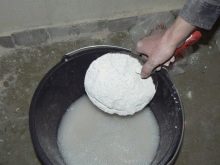

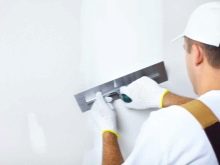
- The speed of hardening of the plaster layer. The material dries up in about 2-6 hours. It all depends on what layer the putty was applied with.
- Ease of surface treatment. After drying, the putty base is well sanded with a mesh or fine sandpaper.
- High degree of hygroscopicity. The putty absorbs well and at the same time gives off water and air well, which means it creates a kind of "breathing" coating.
- Abrasion resistance.
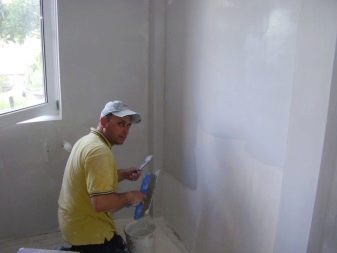
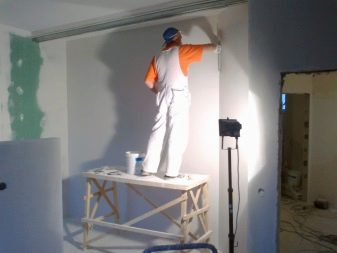
- Good compatibility with building mixtures from other manufacturers. If the base layer of the plaster coating is made with a putty of one name, and the finishing layer is supposed to be applied using the Prospector putty, then there is nothing wrong with that. Due to its good adhesion properties, this material will adhere well to any base substrate.
- Safety for human health. Each type of finishing putty has a certificate or conclusion confirming the compliance of the product with sanitary and hygienic standards, both Russian and European.
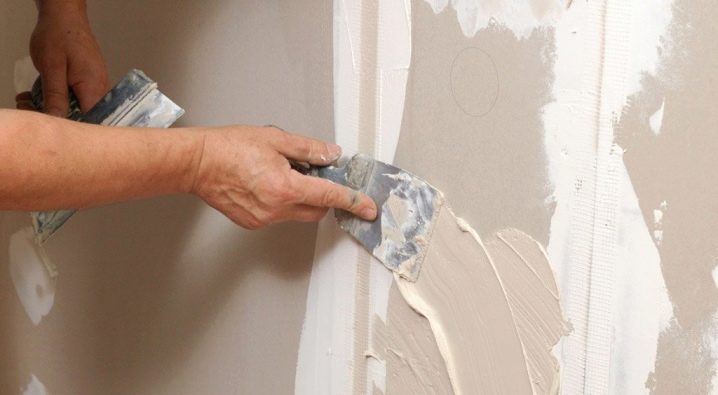
- Availability of putties of various degrees of readiness for use: dry mix and mortar.
- Convenient packaging options. Dry material is packed in bags of 5, 12 and 20 kilograms, ready-made solution - in buckets of 7 and 15 kilograms.
- Long shelf life of the product unopened - one year. Moreover, exposure to low temperatures is allowed.
- Convenience of transportation and storage.
- Low price.
But the finishing putty "Prospectors" also has some drawbacks: the finished mixture must be used immediately, otherwise it will be unusable in an hour due to hardening. And from this follows the second drawback: an increase in material consumption and an increase in the time spent on repair work due to the need to prepare a new mixture.

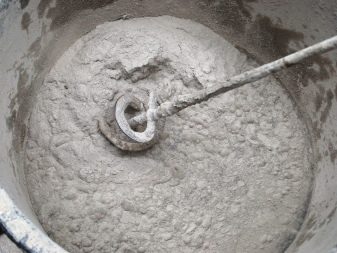
Types and characteristics
Currently, the company "Prospectors" produces the following types of finishing compounds:
- "Finishing putty";
- "Front-finishing putty";
- "Finishing Putty Plus Moisture Resistant";
- "Ready putty Superfinishing";
- Finishing putty KR.
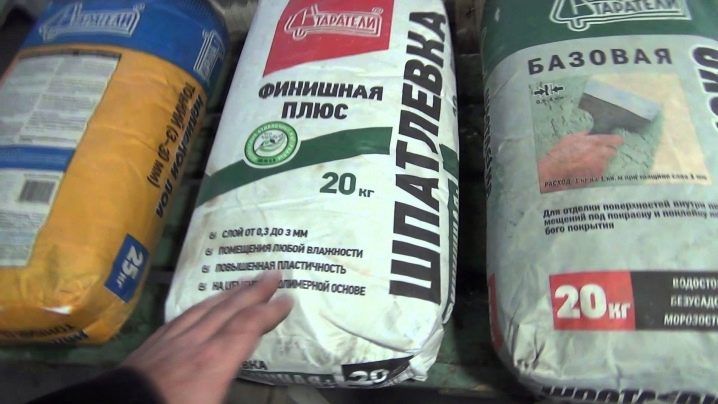
"Finishing putty" Is a gypsum dry white mixture used for plastering indoor surfaces.
The composition includes modifying additives.
The recommended thickness of the applied layer is 0.3-5 cm. Material consumption under this condition will be 900 g per square meter of surface.
It can be applied on plastered, concrete and brick substrates for subsequent painting or wallpapering.
Suitable for use in places where regular wet cleaning is expected.
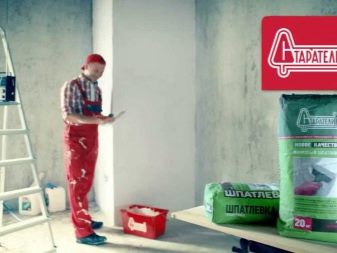
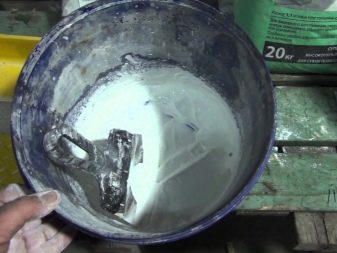
It is not permitted to use this material in places where there will be contact with food or drinking water.
This type of putty is applied to a dry, clean and solid surface. If the base has crumbling or unreliable areas, these should be removed. Gypsum and other hygroscopic bases must be pre-treated with a primer.
The putty solution is prepared at the rate of 400-580 ml of water per kilogram of dry matter.
This type of material is sold in containers of 5, 12 and 20 kg.
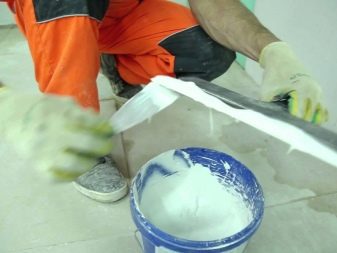
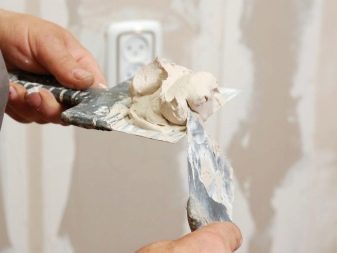
"Front-finishing putty" Is a mixture for plastering mainly outside the building. The material is also suitable for interior use.
The functional determines the following properties of this product: frost resistance, weather resistance, crack resistance.
The composition of the facade-finishing mixture includes white cement, modifying additives and natural filler of fine fraction.
The topcoat can be applied to a cement, concrete and reinforced concrete base for subsequent application of decorative plaster, painting and wallpapering.
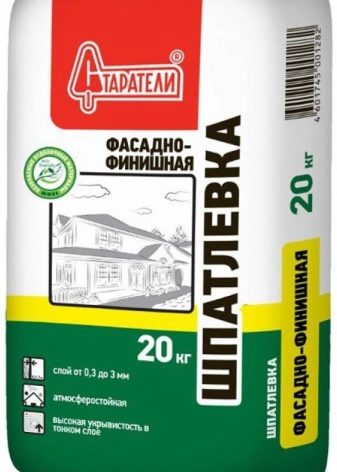
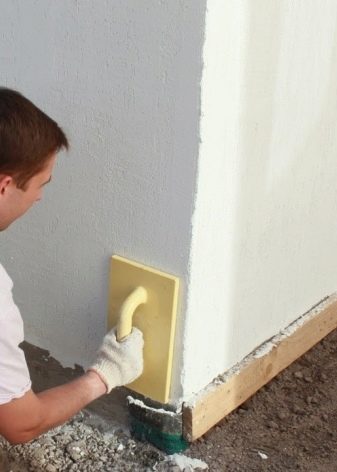
Suitable for application in wet areas. Not recommended for use in places where food contact is expected.
The recommended thickness of the applied layer is from 0.3 to 3 mm. Consumption is a kilogram per square meter with a layer of 1 mm thick putty.
The solution is prepared at the rate of 320-400 ml per kilogram of dry powder.
The prepared solution retains its viability for three hours from the moment of mixing.
Packaging - only in bags of 20 kg.
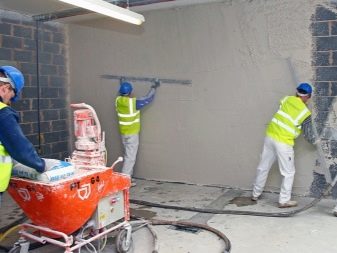
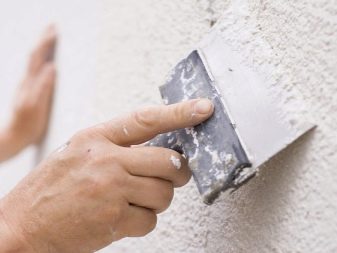
"Finishing Putty Plus Moisture Resistant" is a white polymer-cement plastic material with increased moisture resistance.
Can be applied on gypsum plaster, concrete and drywall surfaces.
The thickness of the putty layer recommended by the instructions is 0.3-3 mm. Material consumption - 800 grams per square meter (layer thickness 1 mm).
The base for applying the solution is prepared similarly to the finishing putty.
The solution is prepared at the rate of 350-400 ml per kilogram of dry powder.
The prepared solution retains its viability within six hours from the moment of mixing.
Packaging - only in bags of 20 kg.
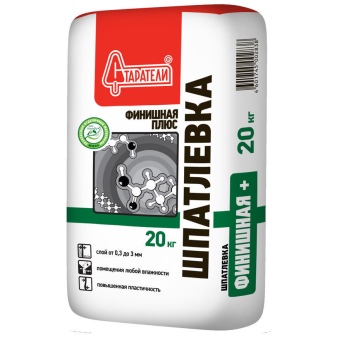
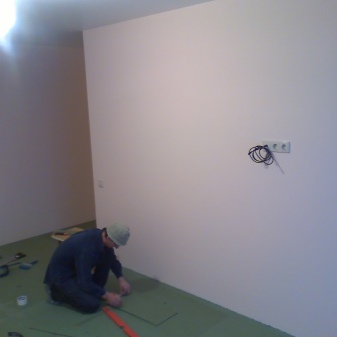
"Ready putty Superfinishing". This material is a ready-made putty mixture in the form of a paste.
It includes: reinforcing fibers, polymer binder, fine-grained fillers, antiseptic fraction and modifying additives.
Ready-made paste is used only for interior work in rooms with normal humidity levels. It is applied on gypsum plasterboards, gypsum plaster, tongue-and-groove plates, fiberglass. The subsequent coating can be in the form of wallpaper or a paint layer.
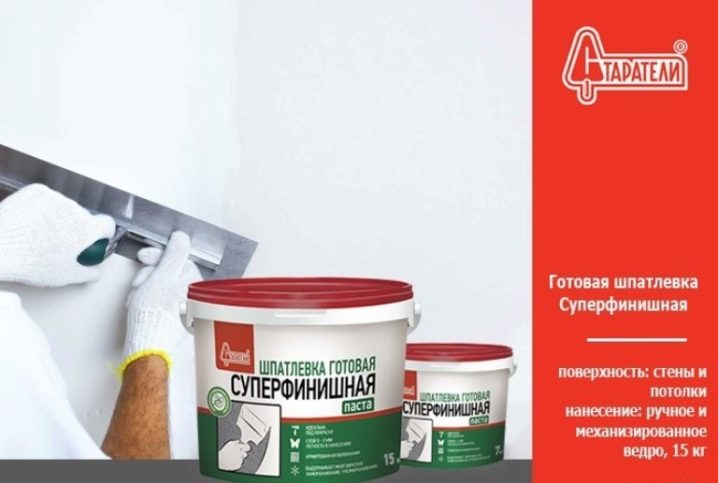
The recommended maximum thickness of the putty applied is 2 mm. Consumption of paste with a layer of filler 0.3 mm is 500 g per square meter.
The adhesive ability of the material is up to 0.5 mPa.
Drying time of a 1 mm layer of putty is 4 hours.
The base for applying the solution is prepared similarly to the finishing putty.
Packaging - in plastic buckets of 7 and 15 kg.
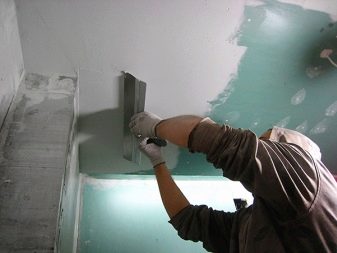
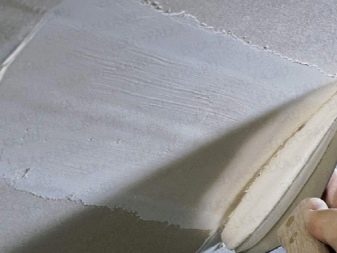
"Finishing putty KR" is a finishing polymer highly plastic material for interior renovation. Recommended for use in dry rooms only.
It can be applied to concrete, gypsum-based plaster, but is most suitable for plasterboard processing. The boiling white color of this material and its good covering ability significantly save costs for the subsequent painting of the treated surface.


It is recommended to apply this type of filler with a layer of 0.3-3 mm. Material consumption for 1 mm of a layer with an area of 1 sq. M. will be 1.1 kilograms.
The finished mixture of KR putty has an increased indicator of vitality - the solution can retain its properties for 24 hours from the moment of preparation.
The mixture is packed in small and large containers - in bags of 5 and 20 kg, respectively.
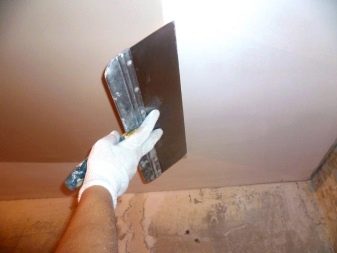
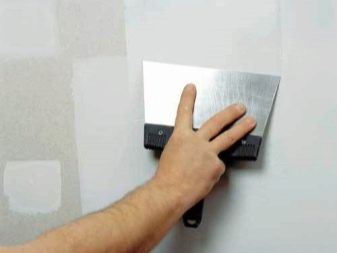
How to choose?
If, before starting the repair and plastering work, it was decided to use the finishing putty "Prospectors", then it will be quite simple to choose a specific type of this product. The determining factors in this matter will be:
- Scope of work. If it is necessary to putty the facade of the building, then the only choice will be "Front-finishing putty", if internal work is supposed, then we continue the choice.
- Humidity level air in the room being repaired. If the room is with high humidity, then only a special moisture-resistant mixture "Finishing Putty Plus Moisture-resistant" can be used for finishing. Any type of finishing putty "Prospectors" is suitable for dry. So, we go to the next step in the choice.

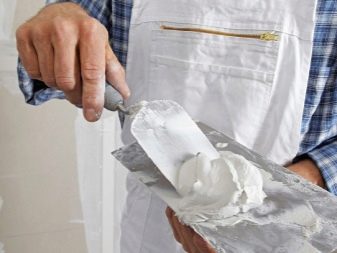
- Base type... If the base is to be leveled, with cement plaster applied to it, then we stop at the "Finishing Putty" or "Facade-Finishing", if the base is covered with fiberglass, then on the "Finished Superfinish Putty". For other types of surfaces - gypsum plaster, concrete, drywall, reinforced concrete, any type of mixture is suitable.
- Type of subsequent coating. If decorative plaster is supposed to be applied to the finishing layer, then to level the walls it is necessary to purchase "Finishing Putty", "Finishing Putty Plus Moisture Resistant", or "Facade-Finishing". Any type of putty can be used for wallpapering and painting.
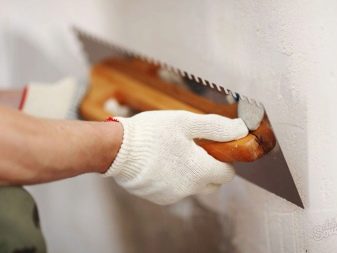
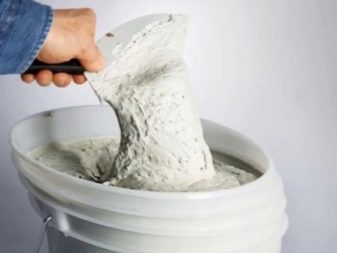
- Pot life of the finished mixture... If this parameter is important when carrying out work, it should be noted that the fastest losing its qualities is "Finishing Putty" (after an hour), then comes "Front-finishing putty" (after three hours), after six hours the moisture-resistant composition hardens. The most viable is the putty marked "KR". The finished solution does not harden at all when stored in a container.
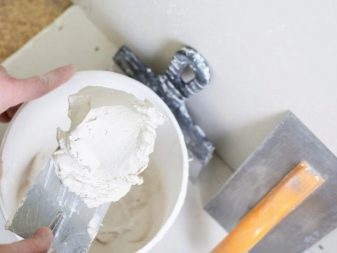
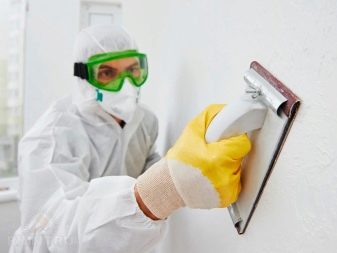
- Mixture consumption... If you place all the finishing putties in the order of increasing the solution consumption per square meter, you get the following row: “Finishing Putty Plus Moisture-resistant”, “Ready putty Superfinishing”, “Finishing putty”, “Front-finishing putty”, “Finishing putty” ...
- Package. If it is necessary to carry out minor repairs, then it is quite enough to purchase the material in a small package, for example, 5 kg each.For large-scale works, it is more profitable to purchase material in large containers of 20 kg.
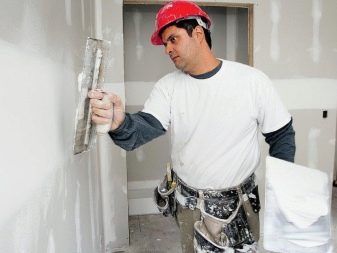
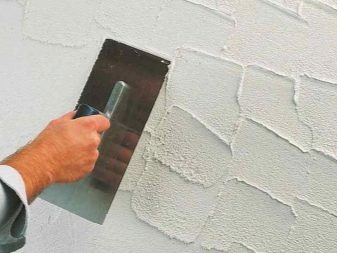
Reviews
Based on the reviews, the finishing putty mixtures of the "Prospector" company are very well appreciated by consumers. The material is easy and quick to apply, it corrects all surface irregularities well and dries quickly, the finish coat made with it does not crack. Due to the availability of small packaging at the manufacturer, it is possible to economically perform small repair work - to putty cracks or to process the seams between sheets of drywall. In addition, with all the above advantages, the material also has a more attractive low price than that of foreign-made putty compounds.

Application Tips
Before applying the putty mixture, the manufacturer recommends treating the base with a primer (also from the Prospector company).
After the soil has dried, all existing cavities are filled with a spatula with a solution. After that, the solution is leveled. When carrying out work, it is important to observe the temperature regime (optimal - 10-30 degrees). Also, you should not carry out puttying work in direct sunlight.
If it is necessary to apply several layers of material, then each subsequent application is carried out no earlier than four hours after the end of the application of the previous layer.
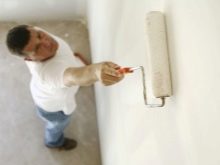
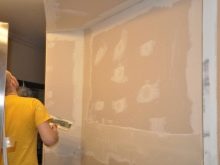
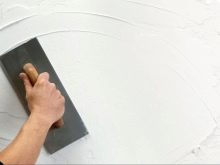
Usually putty "Prospectors" gives a flat and smooth surface that does not require additional sanding, but if necessary, the surface or any part of it can be easily sanded with fine sandpaper.
The final finishing of surfaces (wallpapering, applying a paint layer or decorative plaster) is possible only after the final putty layer has completely dried.
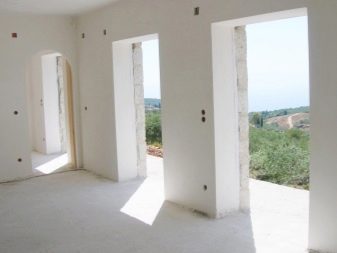
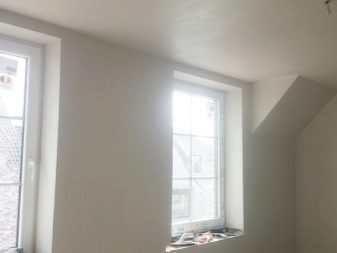
If it is necessary to seal the seams between the sheets of drywall, then first, using a spatula, fill the gaps between the sheets with material and attach a reinforcing tape along the seam. Pressing it directly into the seam, remove the excess putty from the drywall with a spatula. When the solution is dry, you can start applying the next layer. And this must be done until the seam is completely equal to the surface of the drywall sheet. In the same way, the putty mixture is applied to the areas of sheet attachment.

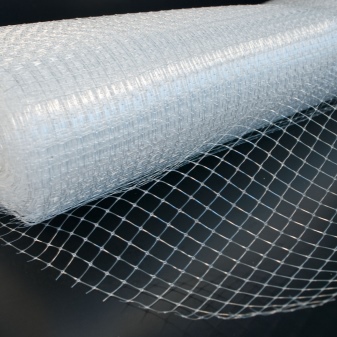
For information on how to putty the walls yourself, see the next video.













The comment was sent successfully.